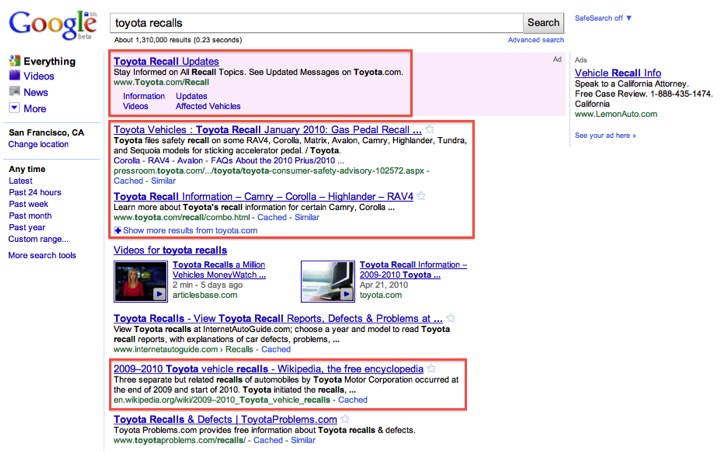 Ask most marketing execs what they consider online public relations and you’ll probably hear activities that include “PR Newswire submissions” and “sending Bloggers free stuff.”
Ask most marketing execs what they consider online public relations and you’ll probably hear activities that include “PR Newswire submissions” and “sending Bloggers free stuff.”
While this view may have been the reality five years ago, online PR today is far more nuanced – it requires gaining as much positive exposure as possible among authoritative blogs and websites, while leveraging social networks and content platforms to help maintain a dialogue with customers and media outlets.
The press release is a good example. Today, online press releases are far more than just a media relations tool. They are crawled by search engines and can be searched for and discovered by global internet users and media outlets, living on as long as they are indexed. In an ironic twist, online press releases even end up in print.
In addition to press releases, companies have other “digital assets” like white papers, webinars, videos, newsletters, podcasts and blog content. Most companies fail to extract the full value of their digital assets because their PR and Marketing teams are busy focusing on the next project. Instead, companies should take the time to catalog and optimize all their digital assets, current and dated, for search engines in order to give customers and media outlets the information they’re looking for in the formats they’re most likely to respond to.
In addition to optimizing digital assets for search engines, PR professionals can benefit from understanding how Paid Search Marketing (a.k.a. SEM or PPC) can strengthen a campaign. Below is an example of how Toyota used paid ads on Google Ads to supplement corporate messaging around their 2010 vehicle recalls.

In addition to damage control, there are other ways that paid search ads can help strengthen a PR campaign. Paid search ads can be used to help announce a product launch, highlight a change in management, explain a merger or acquisition, or provide financial information to shareholders.
The decision is not whether PR professionals should integrate SEO or SEM into their campaign, but rather how to use a combination of the two to achieve specific goals. Marketing and PR budgets often get cut because their efforts and impact are often difficult to measure. One of the greatest benefits of SEM, SEO and other online marketing channels is that their impact can be easily measured.
“I know that half of my advertising budget is wasted, but I’m not sure which half.”
– Lord Leverhulme
For additional details on this topic, flip through the presentation below:
SEO and SEM as PR Tools
10 Key Takeaways:
- Online PR goes far beyond Blogger relations
- A company’s digital assets are marketing tools in disguise
- Press releases aren’t just for journalists
- Online communication can lead to offline exposure
- The right keywords make all the difference
- Consistent language multiplies impact
- Search engine friendly content maximizes ROI
- If you are not listed on the first two pages, you don’t exist
- SEO takes time, SEM is on demand
- Impact metrics prove value, contribute to return business
